University History Assignment: Inside Hana's Suitcase Analysis
VerifiedAdded on 2022/08/08
|6
|1378
|22
Homework Assignment
AI Summary
This assignment analyzes two texts: 'Inside Hana's Suitcase' and Elie Wiesel's 'Night'. Assignment A focuses on the establishment of the Tokyo Holocaust Education Resource Center, the information revealed by Hana's suitcase, the restrictions imposed on Jews during the Holocaust, and the experiences of George and Hana Brady in Terezin and Auschwitz. The assignment explores the children's art, the transport lists, and George's reflections. Assignment B delves into the restrictions imposed on Jewish people, Wiesel's experiences in Birkenau and Buna, including the horrors of the gas chambers, dental examinations, and forced marches. It examines the factors leading to the death of Wiesel's father and the resistance efforts in the camp. Both assignments collectively examine the impact of the Holocaust on individuals and the importance of education and remembrance.
1 out of 6
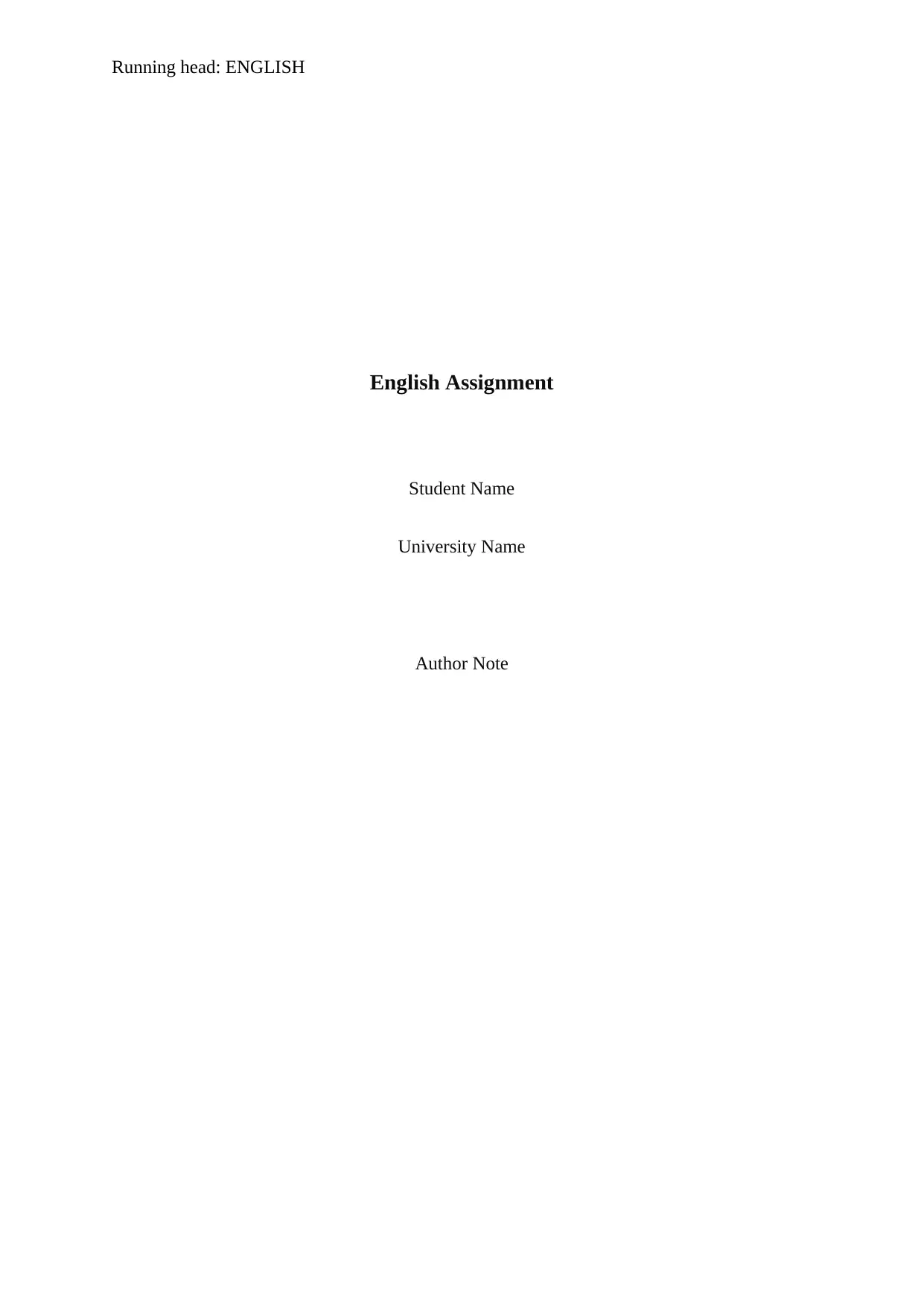
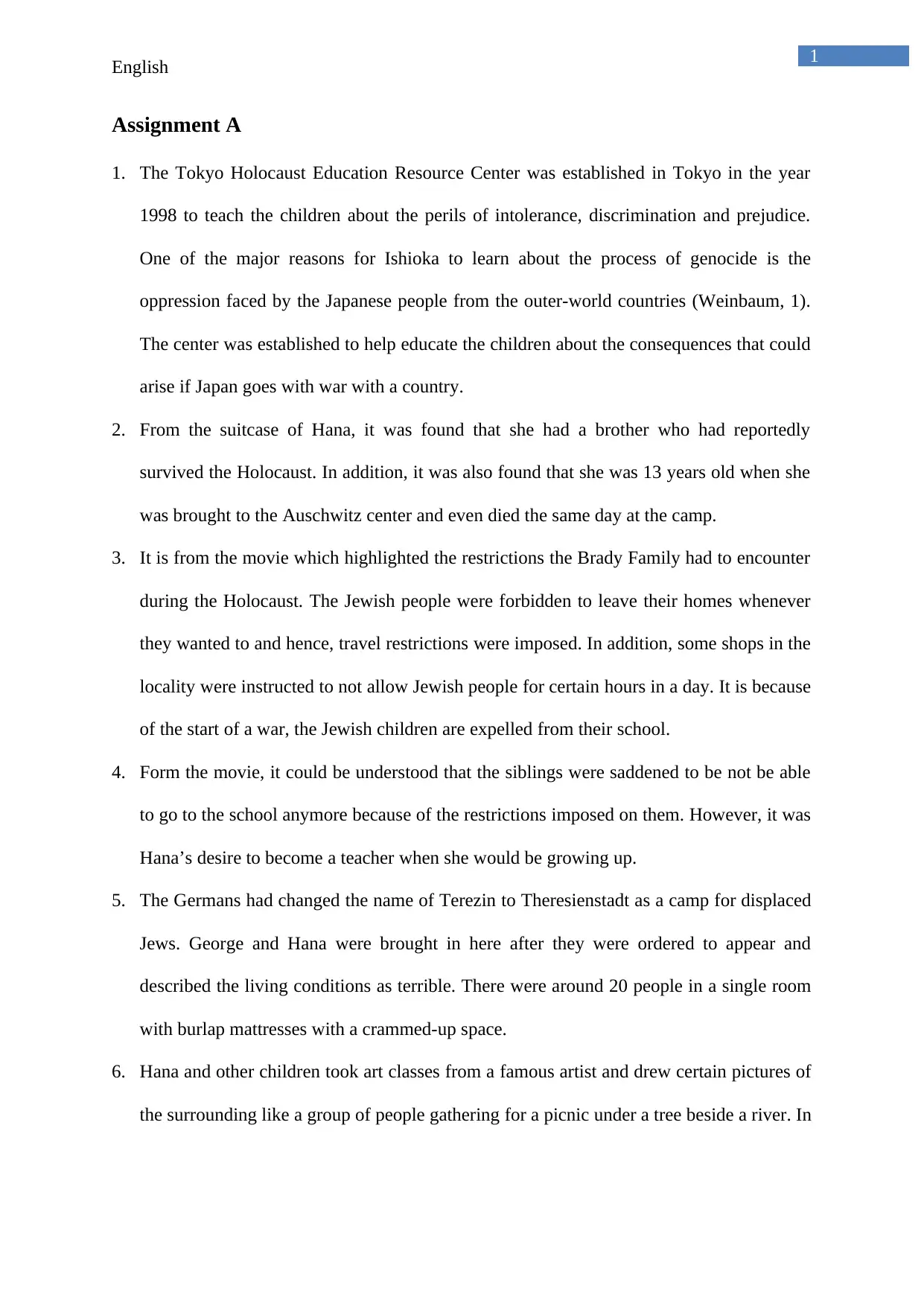
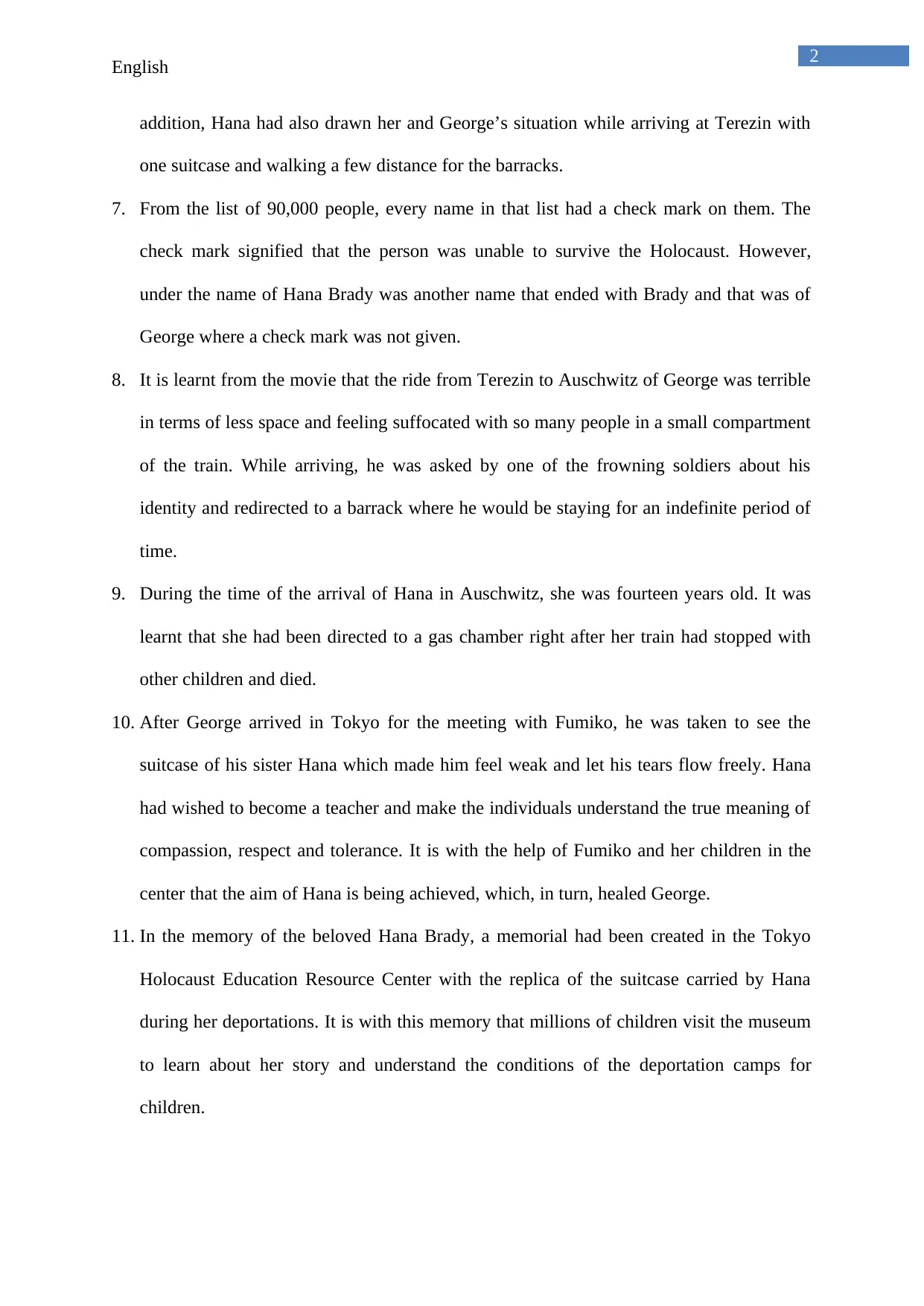
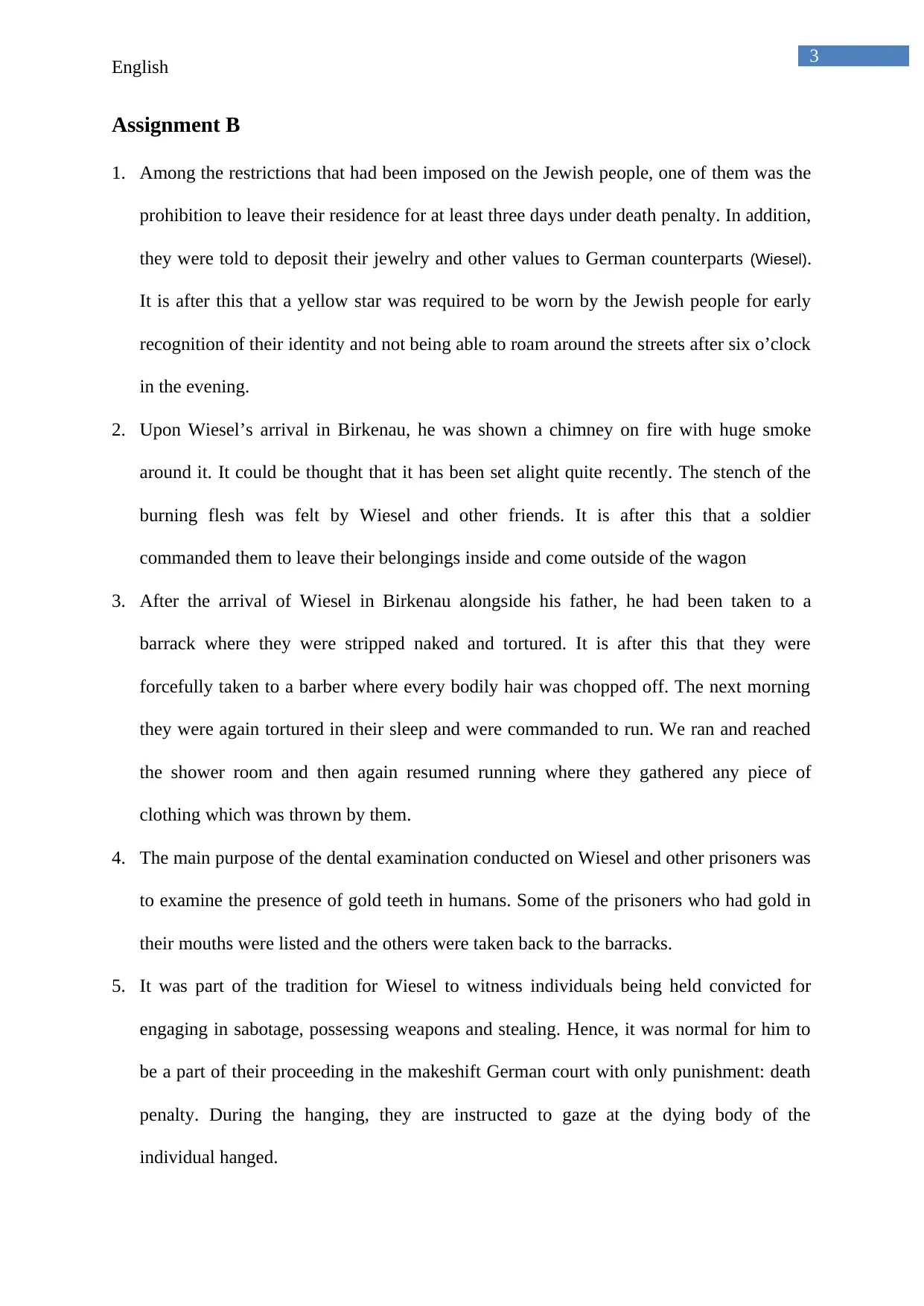
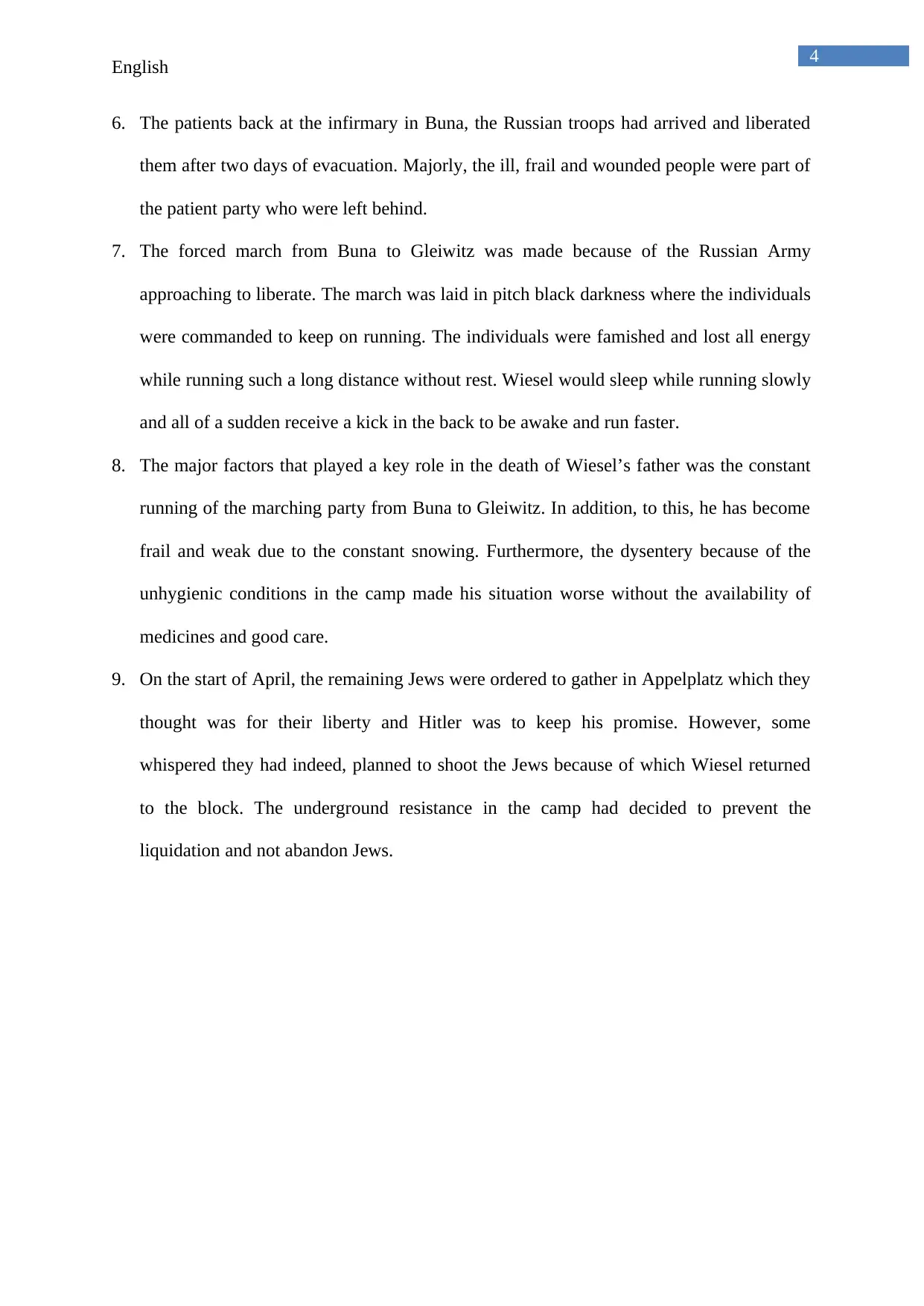
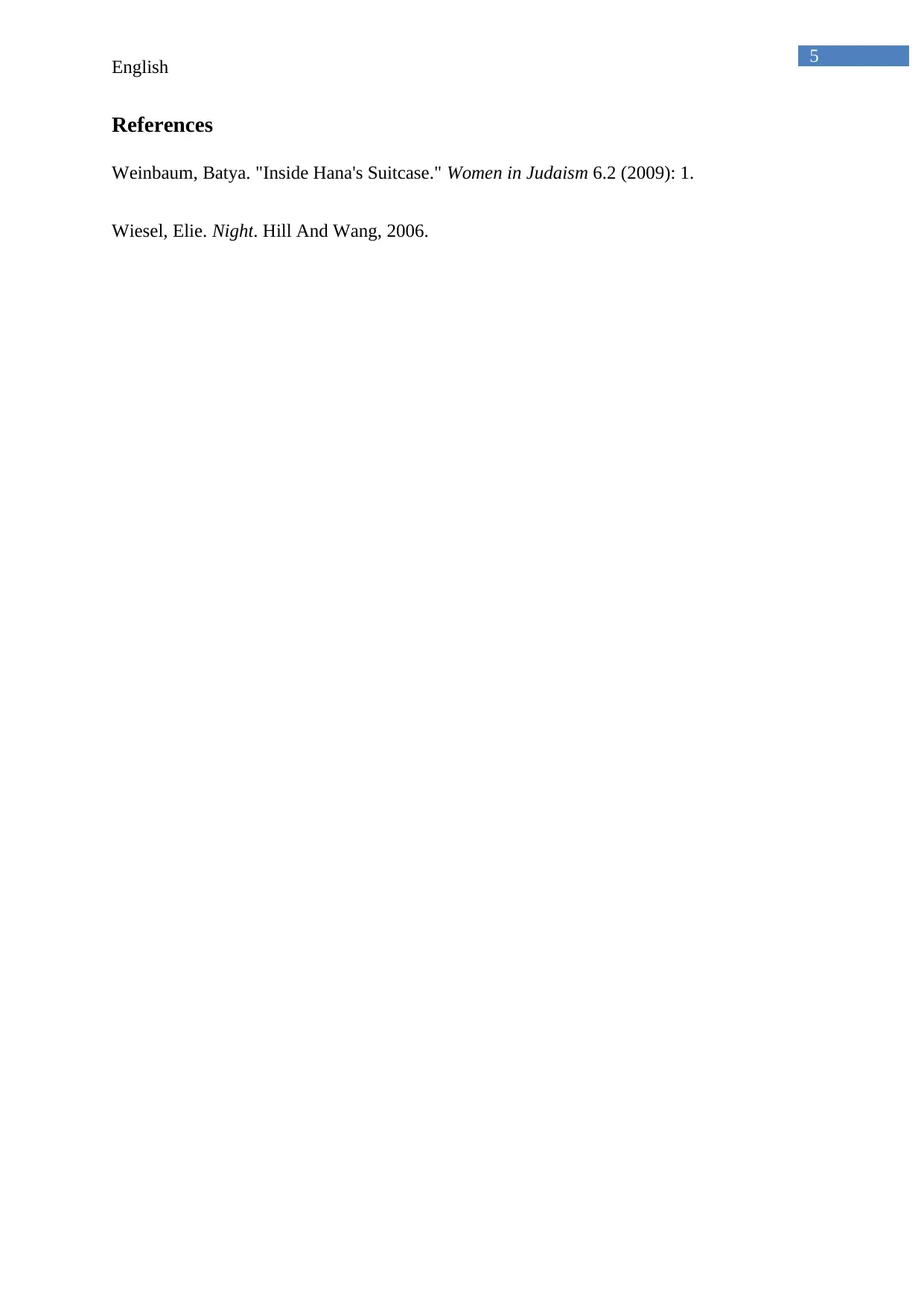




![[object Object]](/_next/static/media/star-bottom.7253800d.svg)